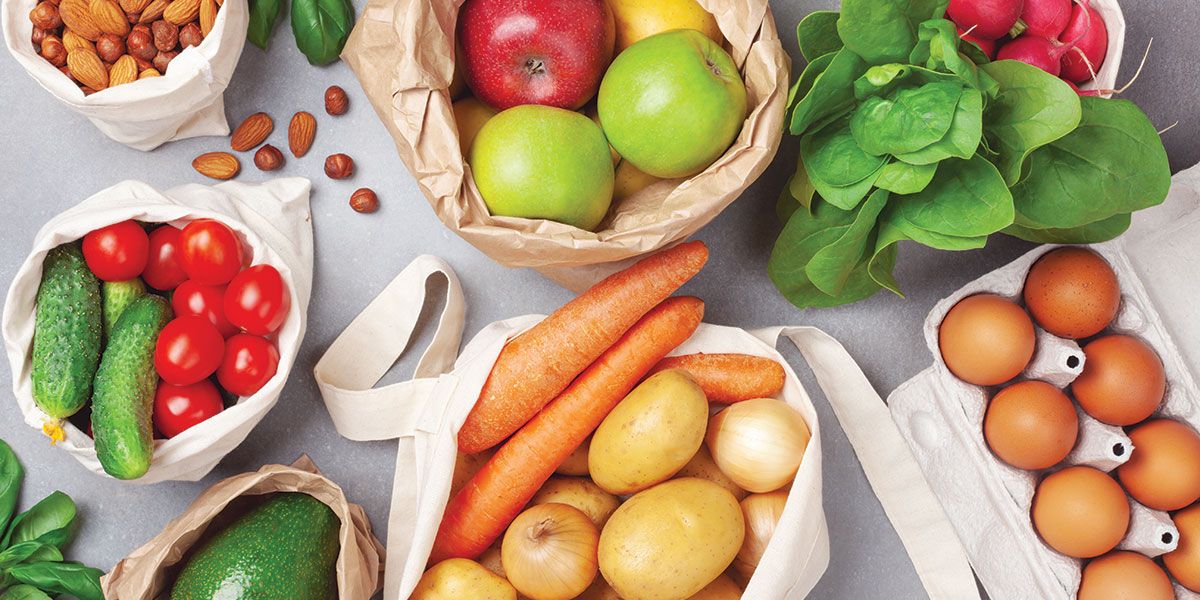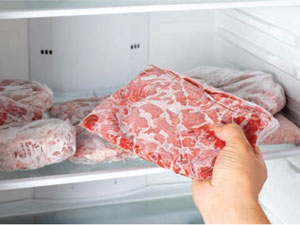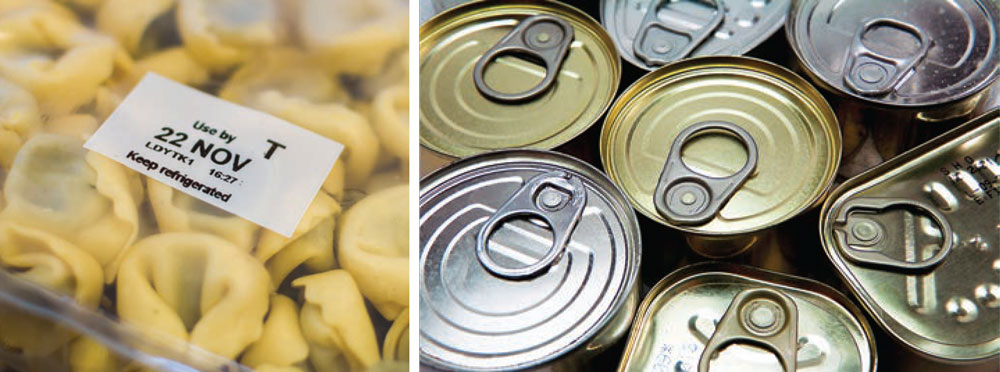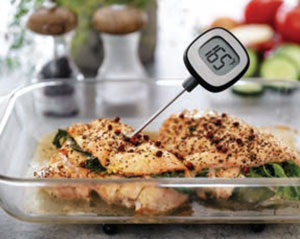USE IT OR LOSE IT

Shelf life, expiration dates & other food safety tips
With fall, we often gather more for tailgating, family reunions and church homecomings. Many of these social events involve meals — and nothing turns a lovely memory into a nightmare quicker than food poisoning. Thus, keeping dishes cooked and stored properly is essential.
A good way to practice food safety is to learn about expiration dates and when food goes bad, how to safely thaw meat and even the proper location and temperature to store certain foods.
Food expiration dates
Food products usually come with some form of expiration date; however, this guidance is not always clear. “Around 90 percent of people in the U.S. don’t understand expiration dates on food labels. They throw away food that is still good or could be frozen for later,” according to an article on WebMD.com. This may have you wondering what the dates mean and how to determine if the food is good or not. Let’s take a look.
- Sell-By: This refers to the last day a retailer can display a product for sale. If stored properly, food can be safe to eat for up to 10 days.
- Best If Used By: This refers to eating your foods by this date for the best flavor and quality.
- Expiration: The dates on these products use phrases like “expires on.” The food products will not be as effective or function the same after the date listed.
 Thawing meat
Thawing meat
Many people make the mistake of leaving foods, particularly meat, on the counter at room temperature to thaw. This method of defrosting is not considered safe and could increase the risk of bacteria growth. Perishable foods such as raw meat have to be kept at a safe temperature while thawing and should not be left at room temperature for more than two hours.
So, what are the best practices when it comes to safely thawing meat? According to the USDA Food Safety and Inspection Service, there are three safe ways to thaw food: in the refrigerator, in cold water and in the microwave.
REFRIGERATE
When thawing meat in the refrigerator, it’s crucial that you plan ahead for the sake of time! Small amounts of frozen food — such as ground meat or chicken breasts — require a full day to thaw.
If you’re in a pinch for time, or just simply don’t want to wait for the meat to thaw for dinner, you can always cook your meat when it’s frozen. The U.S. Department of Agriculture states that it’s safe to cook foods from the frozen state, just keep in mind that cooking will take approximately 50 percent longer.
After thawing in the refrigerator, ground meats and poultry should be good for one to two days before cooking. Red meats remain good three to five days before cooking. USDA.gov says that food thawed in the refrigerator can be refrozen without cooking, but may lose some of its quality.
COLD WATER
Thawing meat in cold water is another option. This method is faster than defrosting in the refrigerator and allows the meat to thaw evenly. Place the meat in a bowl of cold water, making sure it’s wrapped in a leak-proof package or plastic bag. Keep checking and changing the water every 30 to 45 minutes so that it stays cold. Meat thawed in this way should be cooked within a day. Do not refreeze the meat.
Never use hot water when thawing meat as this can cause bacteria to form and will start to “cook” the meat on the outside before the inside is thawed.
MICROWAVE
When using the microwave method to defrost your meats, the USDA’s website recommends cooking it immediately after thawing. Some areas of the defrosting meat can become warm and begin to cook when in the microwave; this, of course, raises the temperature and brings it to a point where bacteria will start to grow. Foods thawed in the microwave should be cooked before refreezing.

FIRST THINGS FIRST
No matter what you’re preparing, these rules are essential to food safety:
- Keep hands and surfaces clean. You should wash your hands for at least 20 seconds before and after handling food.
- Avoid cross-contamination. For example, don’t use the same cutting board for vegetables after you slice up chicken!
- Cook to proper temperatures (use a food thermometer when needed).
- Hot food should be held at 140°F or warmer. Use chafing dishes or slow cookers to keep hot food hot on a buffet.
- Cold food should be held at 40°F or colder. Keep food cold for a buffet in nesting dishes with bowls of ice.
- Perishable food should not be left out for more than two hours at room temperature (less time if it’s hotter).
Refrigerate vs. counter/pantry
When it comes to foods like produce and condiments, there are differing opinions on which foods are best kept refrigerated or stored at room temperature. This list can serve as a quick reference guide: 
REFRIGERATED
- Maple syrup
- Mayonnaise
- Salad dressings
- Jam and jelly
- Salsa
- Butter — can be safe at room temperature, however if left out for several days the flavor could turn rancid. For best quality, store in fridge.
ROOM TEMPERATURE
- Ketchup — shelf life of one month, otherwise refrigerate
- Mustard — shelf life of two months, otherwise refrigerate
- Soy sauce — shelf life of one year
- Hot sauce — shelf life of three years
- Honey — indefinite, if stored properly
- Bread — room temperature is best for fresh-baked bread; store-bought breads can be left at room temperature or stored in refrigerator without much change in texture.
- Nut butters — conventional are fine stored at room temperature; natural nut butters can go rancid if used slowly.
While ensuring the quality and safety of our food is important, it doesn’t have to make meal prep in the kitchen stressful. Being educated and aware of food safety practices helps you feel more confident serving up delicious and safe foods for you and your family. ✦
best if used by, cold water, expiration dates, food poisoning, food safety, microwave, perishable foods, refrigerate, room temperatur, sell-by, shelf life, thawing meat









